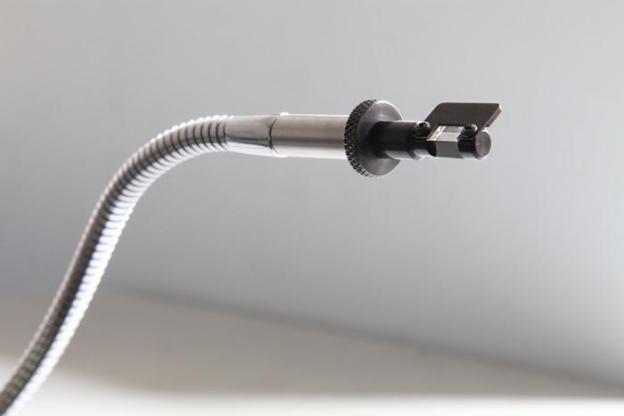
Looking to support some awesome photography projects? Channel you inner venture capitalist and get in on these crowdfunding prototypes.
The camera lucida, an old 19th–century optical technique that artists employed to help draw what they see, has been updated for the modern age by two university art professors. Pablo Garcia, an assistant professor at the School of the Art Institute of Chicago, and Golan Levin, an associate professor at Carnegie Melon, devised an inexpensive, portable camera that allows the user to “draw from life,” as the creators put it.
What is a camera lucida? As Garcia and Levin put it, a camera lucida is “a prism on an adjustable stand. When an artist looks down through the prism, they see the world in front of them, plus their hand on the page, combined in perfect superimposition. In short, a camera lucida allows you to trace what you see.” Highly popular in the 1800s, it’s an effective method in portraitures. In Garcia and Levin’s modern version (shown above), the NeoLucida is highly portable, with a small prism attached to flexible stand with clamp. There’s no electricity required nor are there any computer components reproducing the image – low-tech meets high-tech, if you will.
For those who want one, you’re a bit out of luck. While there are still 28 days left in the Kickstarter campaign, the projects has surpassed its $15,000 goal – garnering more than $378,000 from more than 9,000 backers – and sold out its initial production run. You can still get in on the second batch with a $40 or pledge, but that’s also going fast. Delivery is expected in September and December. The good news is that the creators plan to release the product details as an open source project, allowing us to build our own NeoLucida.
Videre: The Pop-Up Pinhole Project

From Instagram filters to vintage film cameras, analog photography (or the concept of it) is alive and well. However, some of these old-school cameras can still be expensive. A designer in London, who couldn’t afford a real medium format camera, has created a pinhole alternative called the Videre. Looking like a camera from the olden days, the Videre doesn’t use a lens but a pinhole that lets light in to expose the film – a form of photography that’s been used since ancient times. The neat part is that the Videre is made from thick, die-cut recycled cards that are easy to assemble, made in England.
The project has already reached its funding goal, but you can still get one. Hurry, though, because there are just five days left. Delivery is scheduled for November.


Let’s say you’re faced with the following dilemma: You want to photograph something in the far distance, but your smartphone’s optics is incapable of that type of zoom (please, no digital zooms ever). You have a pair of high-powered binoculars, but you can’t record what you see (unless you have Sony’s new digital recording binoculars). The simple solution would be to marry these two devices, which is what Daniel Fujikake and Mac Nguyen have created: the Snapzoom.
The idea was born out of their passion for surfing and photography, according to the brothers-in-law. “About a year ago we started using binoculars as a telephoto lens for our smartphones. We were amazed with the quality of the photos and videos, but connecting our phones with the scopes was pretty frustrating. We set out to find a simple solution and came up with Snapzoom the universal smartphone scope adapter.”
The adapter, which works with iPhones and Android phones (although you can probably use any camera phone), lets you attach and align the phone with the eyepiece of the scope. “The scope then becomes an accessory lens, and the smartphone camera’s image is magnified by the power of the scope. For example, the iPhone 5’s camera is equivalent to a 33mm lens field of view. Adding a Snapzoom and the average 10x power binocular increases the size of the image to a 330mm lens field of view.” It may be a long time before built-in smartphone optics can achieve this type of zoom, but the Snapzoom is a clever solution in the meantime.
There’s just 14 days left to fund this project, and availability is very limited at this point. If you want to get in on this, act fast. Delivery is estimated for August and September.


